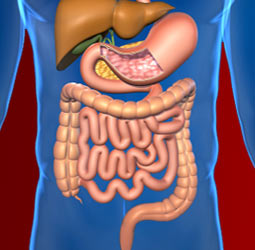- Levy A, Arnaiz J, Shaw JC, Sobin LH. Primary Peritoneal Tumors: Imaging Features with Pathologic Correlation RadioGraphics 2008; 28:583–607
- Bridda A, Padoan I, Mencarelli R, Frego M. Peritoneal Mesothelioma: A Review. MedGenMed. 2007; 9(2): 32.
- Chua TC, Yan TD, Morris D. Peritoneal mesothelioma: current understanding and management. Can J Surg 2009; 52 (1): 59-64
- Levy AD, Shaw JC, Sobin LH. Secondary Tumors and Tumor like Lesions of the Peritoneal Cavity: Imaging Features with Pathologic Correlation. RadioGraphics 2009; 29:347–373
- Jeong YJ, Kim S, Kwak SW, Lee NK, Lee JW, Kim K, Choi KU, Jeon TY. Neoplastic and Non-neoplastic Conditions of Serosal Membrane Origin: CT Findings. RadioGraphics 2008; 28:801–818
About - Peritoneal Cancer
Peritoneal cancers may be primary or secondary. Symptoms and signs of the cancer are vague and the diagnosis is usually late with poor treatment outcome.
Peritoneal cancers may be primary when they originate from the peritoneum itself and secondary if they spread into peritoneum from some other organ.

The peritoneum is a membrane lining the inner surface of the abdomen. It also covers the outer surface of most organs in the abdominal cavity. It prevents friction between different organs and allows them to glide smoothly over one another. It is made up of 2 layers - the portion that lines the abdominal wall called parietal peritoneum and the portion that surrounds the organs called visceral peritoneum. The space between these 2 layers contains a small amount of fluid and is called the peritoneal cavity.
The primary cancers of peritoneum include peritoneal mesotheliomas, primary peritoneal carcinoma, and desmoplastic small round cell tumor. These cancers are rare but they often have a poor prognosis.
Cancers from other parts of the body such as the digestive system, ovaries, lung and breast also spread into the peritoneum. These are termed as secondary cancers and are more common than primary.
Peritoneal cancers cause vague symptoms like abdominal pain, distension and stomach upset; hence they are often diagnosed late. They are treated with surgery, chemotherapy and sometimes in addition radiation. A newer treatment approach includes removing the obvious cancer by a surgical procedure called Cytoreduction and then treating the patient with chemotherapy drugs instilled into the abdomen at a raised temperature through a procedure called Hyperthermic Intraperitoneal Chemotherapy.












